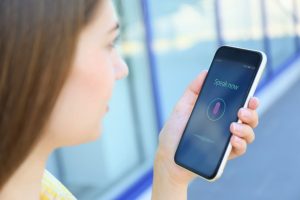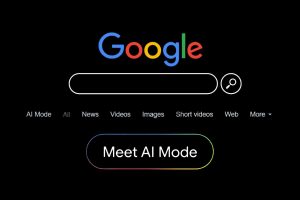Artificial intelligence research company OpenAI has unveiled their newest AI creation called Sora, an AI model capable of generating surprisingly realistic and creative 60-second videos from simple text prompts provided by users.
In a detailed blog post announcement on Wednesday, OpenAI described how Sora represents a major advance in multi-modal AI systems that link language and vision capabilities together to comprehend both text instructions and the needed video elements to render matching scenes. Specifically, OpenAI stated that “the model understands not only what the user has asked for in the prompt, but also how those things exist in the physical world.” This deep integration allows Sora to produce videos containing multiple characters, specific motions and actions, detailed background imagery, and more to align with the text descriptions.
Continuation of OpenAI’s Momentum in Generative AI
OpenAI explained that Sora and other related multi-modal AI models under development could someday “help people solve problems that require real-world interaction.” While the company avoided overpromising Sora’s current abilities and impact given its preliminary state, the launch certainly continues the red-hot momentum OpenAI has energized around generative AI since unveiling their equally viral conversational chatbot called ChatGPT at the end of 2022.
Analysts’ Interest in Sora’s Potential
Yet what has industry analysts most intrigued about Sora’s potential is both the notable video length at 60 seconds as well as the remarkable accuracy and matching with user prompts that OpenAI is claiming at this stage. According to principal analyst Reece Hayden at ABI Research specializing in synthetic media and generative AI, models capable of multi-modal text-to-video generation already exist, but Sora appears poised to push boundaries in terms of scale and coherence.
As Hayden assessed, “One obvious use case is within TV; creating short scenes to support narratives. The model is still limited though, but it shows the direction of the market.” If Sora can continue advancing and prove capable of reliably matching more elaborate video prompts, some researchers envision profound implications for reinventing digital entertainment and personalized content across streaming platforms.
Acknowledgement of Work-in-Progress
Of course, as OpenAI was quick to reiterate, Sora remains a work-in-progress with clear weaknesses around handling spatial relationships accurately at this stage as well as causal effects. As an example of where Sora currently falters, the blog post described how it still struggles with minor details that require sensible cause-and-effect reasoning – such as failing to show a bite mark on a cookie after prompting Sora to have a character bite into said cookie during the scene. So while undoubtedly innovative, OpenAI acknowledges Sora has substantial room for improvement in mimicking logical human reasoning and actions before widespread adoption.
Ensuring responsible and ethical development amidst rapid innovations
Moreover, OpenAI emphasized that they understand safety, oversight, and careful impact assessment will be imperative as models such as Sora continue maturing. As an example, OpenAI discussed specific plans to collaborate with cybersecurity experts specialized in disinformation tactics as an early filtering and testing measure for Sora before releasing access more broadly. These so-called “red teamers” will rigorously evaluate Sora for any vulnerabilities that malicious actors could exploit around generating misleading, harmful, or illegal video content.
Furthermore, according to the Sora announcement blog, OpenAI will consult closely with civil rights experts, model trainers, ethicists, and practitioners focused specifically on AI safety to identify any problematic issues relating to issues including unintended biases and unfair representations. The company expressed an obligation to thoroughly investigate harmful societal impacts that could emerge from Sora’s video generation capabilities going awry before progressing further.
First Access for Artists, Creatives, and Researchers
For now, OpenAI revealed they will grant initial access to Sora only to select research partners and creative professionals collaborating closely under controlled conditions to provide responsible feedback. These early partners span cybersecurity professors, visual artists focused on synthetic media, independent filmmakers and animators, as well as AI researchers affiliated with OpenAI.
Under strict usage agreements, such selective access aims not only to obtain constructive input on improving Sora’s functionality but also to monitor for potential misapplications by those with professional expertise. Furthermore, the experiences of artists and creators will shed further light on whether Sora does in fact augment and assist human-centric projects as intended versus negatively disrupting livelihoods through automation as some critics fear.
ChatGPT Continues Rapid Upgrades Alongside Sora’s Debut
Intriguingly, the unveiling of Sora aligns this same week with several major upgrades announced by OpenAI for ChatGPT as well. Following viral popularity since first releasing ChatGPT in November 2022, OpenAI appears committed to aggressively developing its generative AI capabilities across models and modalities, linking text and visual media breakthroughs.
Specifically, OpenAI revealed key improvements to ChatGPT’s conversational memory and personalization capabilities. While Sora focuses on video, ChatGPT specializes only in text – yet both share commonalities around producing content to match custom user prompts and requests. Going forward, ChatGPT will allow users to manually activate a “Remember This” mode during chats for any specific exchanges to be retained by the model for future sessions, almost like forming an episodic memory with visitors. Furthermore, the refined ChatGPT enables users to request forgetting prior statements completely, allowing a “reset” of sorts for fresh conversations without any biases that may have accumulated previously for that individual.
According to OpenAI Founder and CEO Sam Altman, such upgrades represent responsiveness to user feedback around the need for continuity, context, and personalization in conversations as ChatGPT aims to mimic human-like exchanges more naturally. And enhanced personalization applies equally to Sora’s video generation capabilities as well – a signed-in user able to frame permanent style and content preferences over time rather than needing to respecify vagaries in every new prompt. So while still separate systems, Core AI advancements for remembering and forgetting selectively introduced by OpenAI in ChatGPT do reveal the potential for Sora as well in the future.
The Path Ahead: OpenAI Balances Innovation With Responsibility
As OpenAI appropriately cautioned, Sora remains an exploratory work needing much further development and vetting before reaching mainstream debut. Any generative AI system that creates synthesized content impersonating the real world tangibly risks abuse without diligent safety considerations from advanced detection tools to monitoring for misinformation. However, it remains unclear whether independent audits could truly keep pace with Sora’s rate of improvements in the coming months given how rapidly OpenAI iterates and enhances their AI projects lately.
Nonetheless, the responsible disclosure and selective access provided initially for Sora underscores OpenAI’s commitments to public transparency and ethics concerns even amidst the race to keep innovating. Sora alone promises to unlock radically new ways for users everywhere to turn imaginative ideas into living video creations on demand. And the parallel upgrades applied to ChatGPT only further highlight OpenAI’s positioning at the frontier advancing practical applications for artificial intelligence.
Yet ultimately, societal outcomes and sentiment hang contingent on public perceptions of trust. So by proceeding considerately and avoiding overhype, perhaps OpenAI through breakthroughs like Sora will architect the algorithms underlying creative futures that empower human expression rather than harming it.












